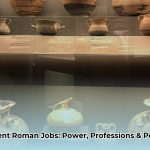For centuries, the captivating blue-green hue of turquoise has mesmerized humanity, celebrated primarily for its enchanting presence in jewelry. But what if we told you that this ancient gemstone holds a universe of potential far beyond the traditional adornments? Prepare to embark on a journey that redefines your perception, as we dive deep into the truly unexpected uses and unconventional uses for turquoise that are poised to dominate creative fields and personal expression. From innovative design to holistic wellness, the uses for turquoise are vast, vibrant, and ready to be unleashed.
Beyond the Bangle: The Enduring Allure of Turquoise as a Unique Gemstone

Before we explore its avant-garde applications, it’s essential to understand the magic of turquoise itself. As a hydrated phosphate of copper and aluminum, this opaque mineral forms in arid regions, its striking coloration ranging from sky blue to green, often flecked with captivating matrix patterns. Revered by ancient Egyptians, Persians, and Native American cultures as a stone of protection, wisdom, and good fortune, turquoise has a rich heritage that extends far beyond mere aesthetics.
To truly appreciate the scope of turquoise’s potential, it’s helpful to delve into the fundamental facts about gemstones and how their unique properties translate into various applications.
A Gemstone’s Legacy: Why Turquoise Captivates
The appeal of turquoise isn’t just its color; it’s its deep cultural significance and perceived metaphysical properties. For millennia, it has been considered a sacred stone, a bridge between heaven and earth. This inherent connection to history and spirituality imbues turquoise with an extra layer of meaning, making its application in unconventional uses even more potent and appealing. Its natural porosity and unique composition also lend themselves to diverse applications, a key factor in its versatility.
Transforming Spaces: Turquoise as an Unconventional Decorative Powerhouse

Forget simple accent pieces. Turquoise can fundamentally reshape environments, injecting vibrant energy and sophisticated character into any space. Its distinct color palette, from serene robin’s egg blue to earthy sage green, offers a spectrum of decorative possibilities that go far beyond what you might expect.
Architectural Accents with an Unexpected Twist
Imagine entering a space where turquoise isn’t just an accessory but an integral part of the architecture.
- Custom Tile Work: While the original article touched on tiles, let’s expand. Beyond backsplashes and bathroom walls, consider
turquoisetiles in grand fireplace surrounds, custom stair risers, or even as decorative inlays on floors, creating stunning visual pathways. The unique veining of naturalturquoisecan be preserved in larger slab pieces for truly bespoke architectural features. - Door and Cabinetry Inlays: Custom-crafted doors or cabinet fronts adorned with intricate
turquoiseinlay work transform mundane utility into functional art. Thisunconventional useadds a touch of bespoke luxury not commonly seen. - Outdoor Living Elements: Consider
turquoisenot just indoors. Weather-sealed (stabilized)turquoisecan be integrated into garden sculptures, mosaic stepping stones, or even as decorative elements around water features, reflecting light and adding a serene pop of color to your exterior landscape.
Statement Furniture and Interior Art
The uses for turquoise in furniture design are limited only by imagination.
- Bespoke Tabletops: A coffee table or dining table with a
turquoiseslab top or intricateturquoiseinlay offers a breathtaking focal point, combining natural beauty with artisan craftsmanship. - Lamp Bases and Fixtures: Custom
turquoiselamp bases or chandelier components diffuse light in a unique way, casting a warm, inviting glow that enhances the stone’s natural beauty. - Wall Murals and Sculptural Installations: Large-scale wall art or three-dimensional sculptures featuring polished or raw
turquoisepieces can become the definitive artistic statement of a room, providing a calming yet powerful presence. This represents a significantunconventional usecompared to typical paintings.
The Canvas of Creation: Turquoise in Eclectic Art Forms & Craftsmanship
Artists and artisans are constantly seeking new mediums and textures to express their vision. Turquoise offers a unique palette of color and geological history, making it an exciting, albeit unexpected use, for various creative expressions.
Beyond Traditional Sculpture: Innovative Artistic Applications
- Mixed Media Masterpieces: Contemporary artists are incorporating raw or polished
turquoisechunks into mixed media paintings and collages, adding tactile depth and a natural, earthy element that traditional pigments cannot replicate. - Inlay and Marquetry in Woodwork: Beyond furniture,
turquoisecan be finely crushed or cut and inlaid into ornate wooden boxes, musical instruments, or fine art frames, creating breathtaking patterns that highlight the contrast between the stone and the wood. This requires immense skill and precision, making it a trulyunconventional use. - Glass Art and Enameling: Powdered
turquoiseor small chips can be fused into glass art or incorporated into enamel work, creating stunning visual effects in everything from statement architectural glass to intricate jewelry art (not just wearable pieces, but sculptural art meant for display).
Crafting Unique Pigments and Dyes
Historically, various minerals were ground into pigments. While synthetic options exist today, the natural vibrancy of turquoise can still inspire unconventional uses.
- Natural Pigment (with Caution): While not widely practical for commercial paint, finely ground, raw
turquoisecould be experimented with by specialized artists to create unique, naturally derived pigments for small-scale, archival art pieces, offering an authentic connection to thegemstoneitself. This is a highlyunexpected useand requires extensive knowledge of mineral safety and preservation. - Textile Art and Dying: With appropriate stabilizers and binders,
turquoise-colored mineral powders can be used to create custom dyes for natural fibers, resulting in fabrics with a unique, earthy texture and rich color that mimics the stone’s natural beauty. This bridges the gap between mineral and textile, offering noveluses for turquoise.
Conscious Connection: Unexpected Uses for Turquoise in Wellness & Spirituality
The competitor analysis highlighted the spiritual and healing properties of turquoise. This is a rich area for unconventional uses that extends its value beyond the purely aesthetic.
Enhancing Meditation and Mindfulness Practices
- Worry Stones and Touchstones: Smooth, tumbled
turquoisestones are perfect handheld tools for mindfulness, providing a grounding tactile sensation during meditation or stressful moments. - Metaphysical Altar Pieces: Large, raw, or polished
turquoisechunks can serve as powerful focal points on personal altars, believed to amplify intentions, facilitate communication, and bring a sense of tranquility to sacred spaces. - Chakra Balancing Tools: As the stone most commonly associated with the throat chakra (communication and self-expression),
turquoiseis used in crystal healing layouts directly on the body to promote energetic balance. These are specificuses for turquoiserooted in ancient beliefs.
Creating Protective and Harmonizing Environments
- Energy Grids: Crystal enthusiasts often arrange
turquoisestones in geometric patterns, or “grids,” within a room to create a harmonized energetic field, promoting protection, serenity, and positive communication in the household. - Personal Talismans and Charms (Non-Wearable): Beyond jewelry, small
turquoisepieces can be placed in wallets, near entrances, or within personal workspaces as private talismans for good luck, protection from negative energies, or to inspire creativity, offering discreet yet meaningfulunexpected uses.
Fashion Forward & Functional: Unconventional Turquoise Beyond Jewelry
While turquoise jewelry is iconic, the gemstone’s vibrant appeal can be extended to fashion and everyday objects in truly innovative ways, making a statement that transcends traditional adornment.
High Fashion and Accessory Innovations
- Statement Belt Buckles: Custom-designed belt buckles featuring elaborate
turquoiseinlay or large, polishedturquoisecabochons elevate an outfit from ordinary to extraordinary, serving as a powerful focal point. - Unique Footwear Accents: High-end designers are experimenting with
turquoisedetailing on shoes – perhaps a subtle inlay on a heel, or a decorative element on the toe box of a bespoke boot. This is a daring and trulyunconventional usein fashion. - Haute Couture Embellishments: For high fashion,
turquoisecan be sewn or embroidered onto garments, not as beads, but as small, polished chips or finely cut pieces, creating incredible texture and sparkle that catches the eye. - Eyewear and Handbag Detailing: Luxurious eyeglasses frames or elegant handbags can feature subtle
turquoiseinlays or small decorative elements, adding a touch of artisanal sophistication.
Everyday Objects with an Unexpected Touch of Gemstone
The uses for turquoise can even find their way into modern gadgets and functional items, blending ancient beauty with contemporary utility.
- Tech Accessories Reimagined: Imagine a smartphone case or a charging dock with a carefully integrated
turquoiseinlay. This transforms a utilitarian object into a piece of art, a subtle nod to luxury and individuality, making for trulyunexpected usesin the digital age. - Gourmet Utensil Handles: For the culinary enthusiast, bespoke kitchen utensils with
turquoise-encrusted handles could be a truly unique and luxurious presentation, though requiring careful sealing and cleaning. - Decorative Desk Supplies: From elegant pen holders to unique paperweights, small
turquoiseelements can imbue office necessities with a touch of natural beauty and inspiration, making your workspace more personal and aesthetically pleasing.
The Practicalities & Potential: Weighing the Uses for Turquoise
Embracing the unconventional uses for turquoise opens a world of creative possibilities, but it also comes with practical considerations. Understanding the nuances of this gemstone is key to successful and durable application.
Pros of Unconventional Turquoise Applications:
- Unrivaled Aesthetic Impact: The unique blue-green hues and natural matrix patterns of
turquoiseoffer a distinctive visual appeal that is hard to replicate with other materials. - Cultural & Spiritual Depth: Integrating
turquoisebrings centuries of history, symbolism, and perceived metaphysical benefits into modern applications. - Versatility: From fine dust for pigments to large slabs for architecture,
turquoisecan be adapted to various forms and scales. - Exclusivity & Individuality: These
unexpected usesensure that an item or space stands out, reflecting a unique artistic vision and personal taste.
Cons and Important Considerations:
- Porosity and Durability: Natural
turquoiseis relatively soft and porous. For mostunconventional uses(especially in high-contact areas, or where water exposure is possible), stabilized or treatedturquoiseis essential to prevent discoloration, damage, and maintain its beauty and integrity. - Cost: While
turquoisecan be widely available, high-quality, naturalgemstonematerial can be expensive, particularly for larger pieces or intricate applications. - Sourcing and Authenticity: Ensuring ethical sourcing and distinguishing genuine
turquoisefrom imitations or heavily dyed alternatives is crucial for quality and value. - Weight: For very large decorative or architectural applications, the weight of solid
turquoisepieces needs to be considered in structural design.
Tips for Successful Unconventional Projects
- Choose Stabilized Turquoise: For most applications outside of purely decorative or spiritual altar pieces, stabilized
turquoise(where the stone is infused with polymer to enhance hardness and reduce porosity) is highly recommended for durability and longevity. - Seal and Protect: Even stabilized
turquoisecan benefit from additional sealing, especially for items exposed to moisture or frequent handling. - Consult Experts: For complex architectural or art installations, consult with gemologists, artisans, or structural engineers to ensure proper application and protection of the
gemstone. - Start Small: If you’re new to
unexpected uses for turquoise, begin with smaller projects like custom inlay boxes or decorative accents before tackling larger installations.
Conclusion: Unleash the Unconventional Potential of Turquoise
From ancient talisman to modern design marvel, turquoise proves itself to be far more than just a pretty stone for a necklace. Its rich history, captivating aesthetics, and versatile properties open avenues for truly unexpected uses and unconventional uses across art, design, wellness, and fashion. By daring to look beyond the obvious, we uncover the boundless uses for turquoise, allowing this magnificent gemstone to infuse our lives and spaces with its unique power and beauty. So, let your imagination take flight, and unleash the vibrant, untapped potential of turquoise in ways you never thought possible.
FAQ Section
Q1: Is turquoise safe for direct culinary use, like as a food coloring or topping?
A: While the original article mentioned “culinary delights,” it is not recommended to use real turquoise powder or pieces directly in food as a colorant or topping. Turquoise is a mineral and can contain elements that are not safe for ingestion. The reference in the original content likely referred to foods colored to resemble turquoise, not using the gemstone itself.
Q2: What are some historical unconventional uses for turquoise that aren’t jewelry?
A: Historically, turquoise was used for ceremonial objects, protective amulets (often carried, not worn as jewelry), inlays in weapons and religious artifacts, and even as currency in some cultures. Ancient civilizations like the Egyptians and Aztecs integrated turquoise into intricate mosaics for masks and sarcophagi, showcasing its early unconventional uses.
Q3: How do I care for turquoise when it’s used in unconventional ways, like on furniture or in art?
A: Care depends heavily on the specific unconventional use. For most applications, especially those exposed to handling or the elements, stabilized turquoise is recommended. Ensure the gemstone is properly sealed to prevent absorption of oils, chemicals, or moisture, which can alter its color. Avoid harsh chemicals for cleaning, opting for a soft, damp cloth. Protect from extreme temperature changes or direct sunlight over long periods.
Q4: Can turquoise truly be used as a pigment in art, and what are the considerations?
A: Yes, finely ground turquoise can technically be used as a pigment, though it is a highly unexpected use today. The main considerations are cost (it’s expensive compared to synthetic pigments), the need for proper binding agents, and ensuring it’s sealed to prevent oxidation or discoloration over time. Artists experimenting with natural mineral pigments must also be aware of any potential toxicity of the raw mineral.
Q5: What makes turquoise a unique gemstone for these diverse, unconventional applications?
A: Turquoise is unique due to its captivating and distinct blue-green color range, its historical and spiritual significance, and its relatively high porosity (in natural form) which allows for stabilization processes that enhance its durability and suitability for a wider array of uses for turquoise. Its natural matrix patterns also add an organic, artistic quality unlike many other uniform gemstones.
Q6: Are there specific challenges when attempting large-scale unconventional uses for turquoise, like architectural features?
A: Yes, significant challenges include the cost and sourcing of large, consistent quality turquoise slabs, the expertise required for cutting and installation (as it is softer than many stone materials), and ensuring proper sealing and structural support to protect the gemstone and integrate it safely into the architecture. These grand unexpected uses demand meticulous planning and execution.










